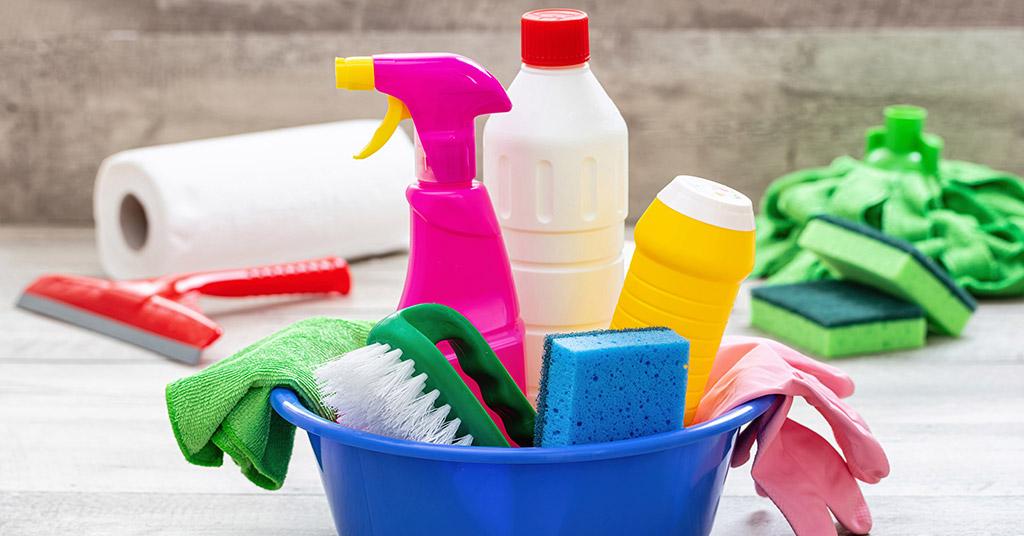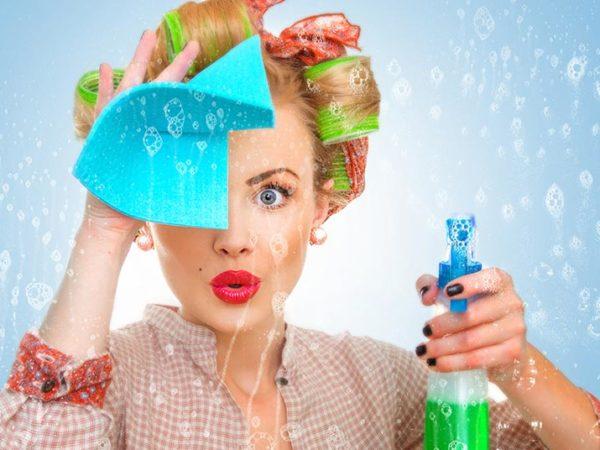
We all know that many household cleaning products contain toxic chemicals. What few of us realise is just how dangerous some of those chemicals can be.
In this article, we share some:
Scary statistics about household chemicals
It’s hard to find recent statistics about the impact on our health of household chemicals in South Africa. Unfortunately, there’s every reason to believe they’re worse than these scary statistics from around the world.
Dramatic increase in asthma
The asthma rate has tripled in the past 20 years. This is believed to be down to the toxic impact of exposure to chemicals in household products.
Indoor air pollution boosts cancer risk
A US Environmental Protection Agency study concluded that the toxic chemicals in household cleaners cause indoor pollution that’s three times more likely to cause cancer than outdoor air.
Cleaning products poison children
Household cleaners, detergents, bleach and toilet bowl products are among the most common causes of poisoning among children.
Chemical exposure causes chronic health problems
Increasingly, evidence links chemical exposure to the rising levels of chronic health problems throughout the world.
Chemicals not tested
Of the 84,000 chemicals registered in the US, only about 1% have been tested for their impact on health.
Babies born ‘polluted’
Tests conducted by five laboratories in the United States, Canada and Europe found up to 232 toxic chemicals in the cord blood samples of newborn babies.
What household chemicals not to mix
Combining some commonly used household products can cause a reaction that produces a toxic – even deadly – compound. These household cleaning products should never be mixed.
Bleach + ammonia
These two chemicals react to form toxic chloramine vapour. If there’s enough ammonia in the mix it can produce hydrazine, which is potentially explosive and deadly.
What it does: chloramine vapour burns your eyes, respiratory system and can lead to internal organ damage.
Bleach + rubbing alcohol
Bleach contains sodium hypochlorite that reacts with ethanol or isopropanol in rubbing alcohol to produce chloroform and other compounds including hydrochloric acid.
What it does: inhaled chloroform knocks you out and can cause death; hydrochloric acid causes burns and organ damage that can lead to cancer.
Bleach + vinegar
Some people mix bleach and vinegar to increase the cleaning power, but it produces chlorine gas.
What it does: this potentially deadly gas has been used in chemical warfare because it attacks the skin, mucous membranes and respiratory system.
Vinegar + peroxide
Vinegar, which is weak acetic acid, combines with hydrogen peroxide to form peracetic acid.
What it does: this highly corrosive acid can severely irritate eyes, skin and the respiratory system, causing burns.
Peroxide + henna dye
Never use a henna dye on chemically treated hair or chemical treatments on hennaed hair. Henna products can contain metallic salts that react with hydrogen peroxide in other hair products.
What it does: the reaction can cause burns and make hair fall out.
Toxic chemicals in South African cleaning products
In an earlier article, we revealed the toxic chemicals commonly found in cleaning products in South Africa and their potential effects. Read the article to find out more about the chemicals listed below and the harm they can do:
- phthalates – tumours, birth defects, and developmental and hormonal disorders
- triclosan – antibiotic-resistant bacteria or “superbugs”
- 2-butoxyethanol – skin and eye irritation, reproductive problems, liver and kidney damage
- perchloroethylene – a carcinogenic linked to liver and kidney tumours
- chlorine – coughing, eye irritation and chest pains
- quaternary ammonium compounds – drug-resistant bacteria
- ammonia – respiratory issues, and eye and skin irritation
- sodium hydroxide – eye, skin and lung burns.
Other toxic ingredients you may see on labels include: para-dichlorobenzene (PDCB), napthalene, formaldehyde, sodium bisulphate (sulphuric acid), solvents (ethyl/isopropyl alcohol, propylene glycol, ethanol, butyl cellosolve), synthetic perfumes, detergents/surfactants containing DEA, TEA and morpholine, EDTA, phenol (carbolic acid/cresol), coal tar dyes, pine oil, alkyl phenols (including nonyl phenol, nonyl phenoxy ethoxylate, alkyl phenol polyglycol), petroleum distillates, napthas, nitrobenzene, phosphates, polyethylene glycol (PEG).
Some of the worst offenders to consider replacing
These household cleaning products contain some of the worst chemicals. You should consider replacing them with natural alternatives.
Air fresheners: skip the “alpine” scent created by synthetic fragrances that commonly contain hormone-disrupting phthalates.
Antibacterial products: they often contain triclosan that encourages the growth of “superbugs”.
Chlorine bleach: it can irritate the lungs and eyes and is responsible for numerous poisoning incidents every year.
Detergents containing phosphates: the nutrients phosphates add to our water systems result in increased growth of algae, plants and bacteria that rob the water of oxygen, killing fish and aquatic organisms.
Spray cleaners: they’re more closely linked to asthma and respiratory irritation than liquid cleaners.
Safety guidelines for household chemicals
Before buying and using any household cleaning product, follow these safety guidelines:
- read all labels
- avoid mixing household chemicals
- store out of reach of children
- store away from direct sunlight
- correctly label containers.
Increasingly, eco-friendly cleaning products are available in supermarkets. Some, though not all, are significantly safer and pose no health risk. They minimise the use of toxic substances in your home and reduce the environmental harm caused by the manufacture, use and disposal of toxic chemicals.
Alternatively, find inspiration to make your own safer cleaning products using household products like bicarbonate of soda, vinegar and lemon juice.
Chelsea Cleaning
At Chelsea Cleaning, we don’t use scary household chemicals, but we do use our professional steam-cleaning machine to clean carpets, curtains, rugs, sofas, mattresses and upholstered furniture – expertly and at a reasonable price. Contact us for more information or a quotation and we’ll be happy to help.



